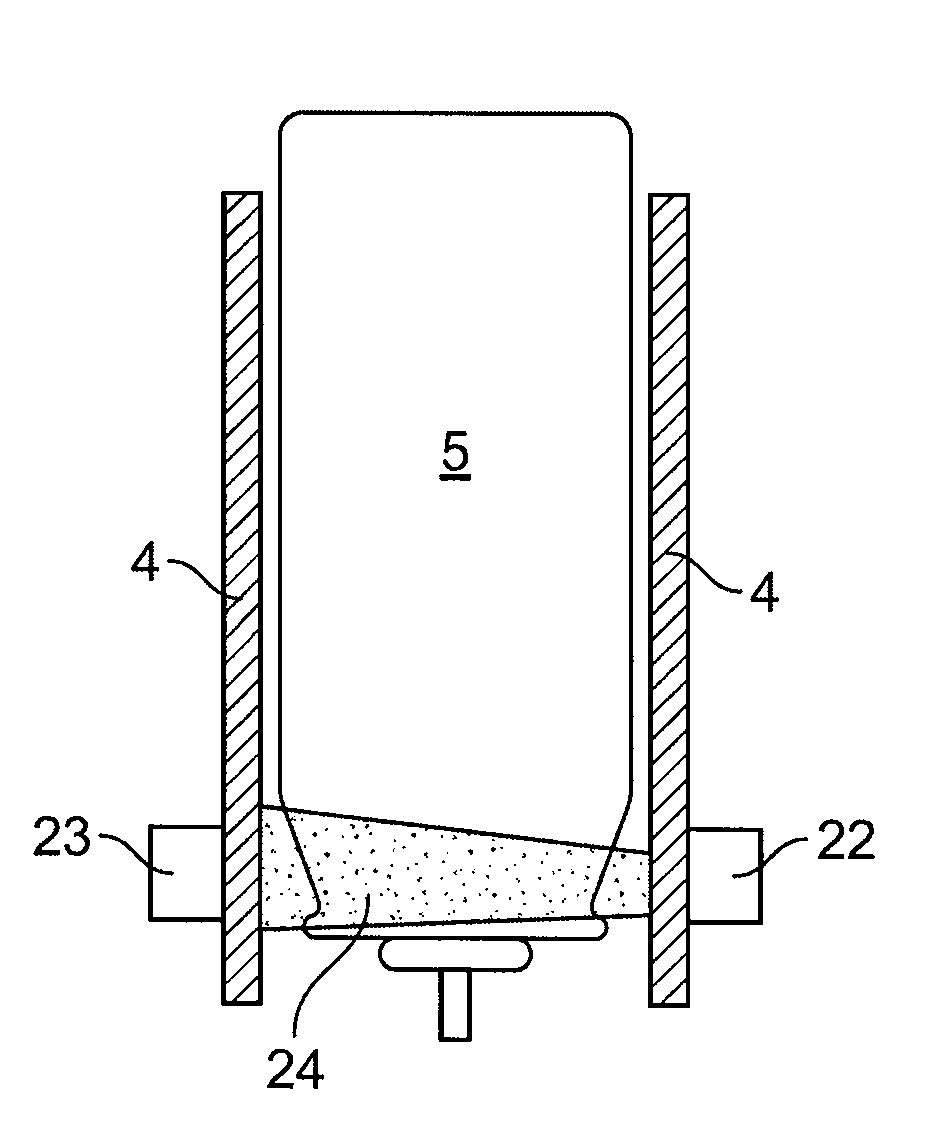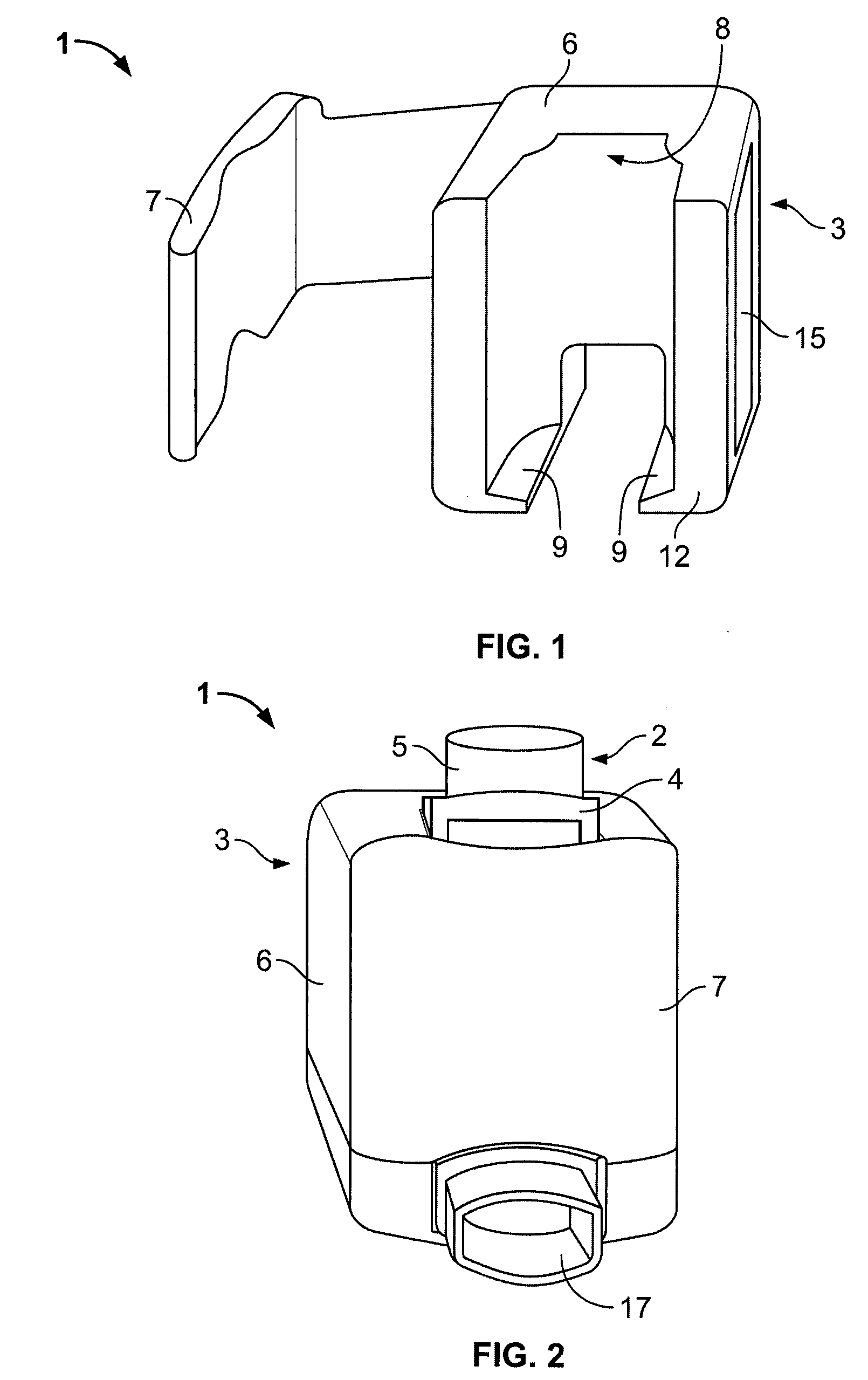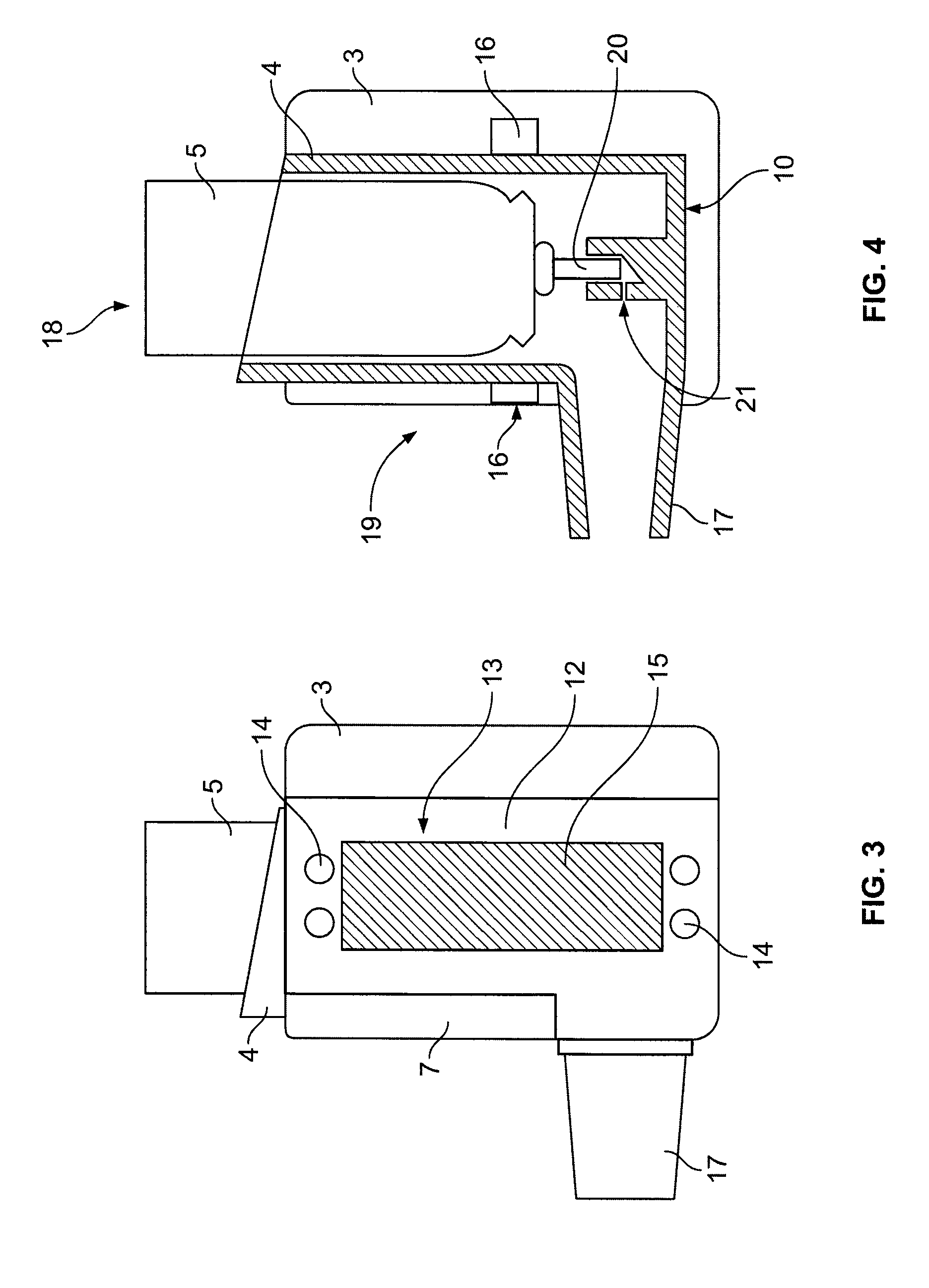The overuse of a reliever medicament has the potential to reduce the effectiveness of the medicament, which may render the medicament less effective in times of real need, for example during a
severe asthma attack.
A problem or difficulty associated with the use of preventer (or “combination”) medicament inhalers is poor medicament compliance.
The consequences of poor medicament compliance are reduced
disease control, lower
quality of life, lost productivity, hospitalisation and avoidable deaths.
Not only is compliance to preventative medicaments typically low, but it has also been shown that actual compliance by a user is lower than the same user's estimated compliance.
There are several problems associated with the use of such mechanical
dose counting means.
Firstly, the mechanical switch mechanisms include
moving parts which may suffer
wear and tear or otherwise deteriorate over time.
Secondly, the switch mechanisms could break off and enter the medicament delivery pathway, and be inadvertently swallowed by the user.
Thirdly, the mechanical switch mechanisms, which are commonly housed inside the
actuator, can change the
airflow characteristics of the inhaler, which may adversely
impact on the medicament
delivery performance of the inhaler.
Lastly, mechanical switch mechanisms may be inadvertently triggered by the user, for example during washing of the
actuator body to clean away any built up medicament residue (which must be done from time to time).
However, a
disadvantage associated with GSK is that the incorporation of a
dose counting mechanism into each and every medicament canister adds cost to the
end user.
Moreover, given that each canister typically contains a one month supply of medicament, it is economically and environmentally wasteful to supply and then discard such technology with each month's medication.
Hence, because such electronic
dose counting means also include
moving parts, these parts are likewise susceptible to
wear and tear and / or deterioration over time (they may also be susceptible to breaking off and / or interfering with the
airflow within the inhaler).
The fitting of such dose counters to an inhaler can therefore be a fiddly or
time consuming operation.
More importantly however, any modifications made to the
actuator (or canister) have the potential to interfere with the
airflow characteristics within the actuator, possibly affecting the effectiveness of delivery of a dose of medicament.
This may result in the patient not receiving the required amount of medicament in order to treat the
disease.
Any modifications made to the actuator may also be prone to disruption when washing the actuator.
This may subsequently result in inaccurate dose counting or
compliance monitoring (Jewett and Deaton address this issue by housing the
compliance monitoring means within a hermetically sealed housing—which increases cost and manufacturing complexity).
A
disadvantage associated with absolute dose counters is that they are dedicated to only one canister at a time.
Hence, they are not able to monitor the ongoing compliance characteristics of a user over a period of time which may involve the user going through many canisters of medicament.
Moreover, absolute dose counters are not able to monitor a person's usage over all four seasons to determine useful information such as any seasonal fluctuations.
Absolute dose counters are also not able to monitor the ongoing compliance characteristics of a user should they change medications when only half way through an existing canister.
This presents its own difficulties or limitations.
Firstly, because the
compliance monitoring device is integrated with the medicament inhaler, it cannot generally be reused for longer than the life of the inhaler.
Furthermore, compliance monitoring technology, and especially electronic compliance monitoring technology, adds cost when integrated into each and every inhaler.
However, reusing an actuator over more than one medicament canister can lead to residual medicament build-up that reduces the quantity of the
drug delivered by the inhaler, and can also change the deposition properties of the
aerosol particles, meaning patients get less medication.
Furthermore, repeatedly discarding the plastic and electronic compliance monitoring technology also creates an environmental
sustainability problem that needs to be addressed.
However, the removal of the electronic module from the sleeve renders the sleeve inoperable, which must then be removed and discarded, which is wasteful and expensive.
Moreover, the fitting of the sleeve and electronic module to an inhaler is a
time consuming and complex operation—which may present significant operational difficulties, especially for young children, the elderly or people of reduced mental capacity.
Hence, the McKinnon device cannot be used across a range of different actuators.
However, Walker uses a mechanical counting mechanism (an external
plunger-type trigger rod), which has the same disadvantages generally associated with mechanical counting means, as referred to previously.
Hence, Levy requires modifications to the inhaler prior to being able to be used—which has the potential, over time, to interfere with the effectiveness of the inhaler to properly deliver medicament.
Furthermore, the sleeve components described in McKinnon, Walker and Levy would not be able to be used in relation to a medicament canister already fitted with an absolute dose counter, eg the GSK device referred to previously.
Another problem associated with integrated electronic compliance monitoring devices is that many drugs are regulated and require exact actuator conformity.
 Login to View More
Login to View More  Login to View More
Login to View More 


